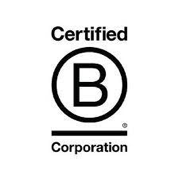8 Social Enterprises and Entrepreneurship
Learning Objectives
After reading this chapter, you should be able to:
- Define how various scholars conceptualize social enterprises.
- Recognize the relative strengths and weaknesses of social enterprises in creating social value.
- Consider the role of social enterprises in a global context.

8.1 Chapter Introduction
Social enterprises are a unique form of organization that have captured the imagination of scholars, nonprofit practitioners and entrepreneurs over the last few decades. Yet, they can be hard to define because they mix elements from the nonprofit and business sectors. In this chapter, we will attempt to develop a working definition of social enterprises and discuss their relative strengths and weaknesses compared to other forms of social value creation.
8.2 What are Social Enterprises?
Like so many other terms, social enterprises defy an easy definition. One reason is because a social enterprise can be any type of organization and can include a variety of different types of activities. One definition would be “the use of nongovernmental, market-based approaches to address social issues.”[1]
It’s important to note that social enterprises can be for-profit, nonprofit or even public organizations. Although each of these forms may have different ways to generate revenue (grants for nonprofits versus investors for businesses), and would include different forms of organizational governance and accountability, what distinguishes them as enterprises is that they use market mechanisms for social good.
Because of this blending and blurring of for-profit and nonprofit organizations in structure, organizational form and vision, social enterprises are often considered to be hybrid organizations.[2]
Activity
Take a few moments to review the two social enterprises below.
Homeboy Industries, based in Los Angeles, has a mission to provide “hope, training, and support to formerly gang-involved and previously incarcerated people, allowing them to redirect their lives and become contributing members of our community.”
BioLite is a “social enterprise that develops, manufactures, and distributes advanced clean energy technologies to off-grid households around the world.”
Discussion Questions:
- One is a for-profit and one is a non-profit. How can you tell? Does it matter?
- Based on the below table in this chapter, how would you categorize their activities? What type of social enterprise is each organization?
8.3 What is Social Entrepreneurship?
The study of entrepreneurship in the United States dates back to the beginning of the study of businesses – the early 20th century. An entrepreneur is someone who “combines existing resources in new and interesting ways.”[3] Entrepreneurs are often founders of their own businesses, and as such, assume all the risks and rewards that may come with that. Entrepreneurship is also often linked to the introduction of new products and services.[4]
Social entrepreneurs, on the other hand, are similar in many ways to traditional business entrepreneurs. However, their goal is to create social value as well as, or instead of, profit.[5] Social value is a contribution to the welfare or well-being of society.[6] Their motive may be not only to make money for themselves or their investors, but also to do good.
Social enterprises can be defined as an activity of the social entrepreneur, as they design and develop a nonprofit or business venture that will benefit others.
8.4 Activities of Social Enterprises
Like nonprofit organizations, social enterprises are often involved in a variety of activities.
- Commercial activities: Many social enterprises sell goods and services to help fund their social mission. For example, for every pair of socks that Bombas sells, they contribute one pair of socks to unhoused individuals. Hot Bread Kitchen, on the other hand, helps train immigrant women to bake and sell bread, a profession most often held by men in the United States and Europe, but women elsewhere in the world. Yet, this definition of buying and selling goods and services can also be broadly defined and even include more “traditional” types of nonprofits like Goodwill or the Salvation Army.
- Corporate philanthropy: For-profit businesses may engage in activities that help advance social missions. Probably one of the best examples is Ben and Jerry’s Ice Cream and their Foundation, which takes a proportion of their profits and redistributes it to the community in the form of grants.
- Microfinance: Related to commercial activities, microfinance organizations are unique in that they provide financial services (most often loans) to individuals living in poverty around the world. These loans, sometimes just a few dollars, are provided with the goal to help lift a person out of poverty. Groups like Grameen Bank and Kiva are examples of microfinance organizations.
Perhaps another way to think about how to categorize social enterprises is by how they raise money compared to how they distribute money to the community.
In the table below, enterprises have been broken into categories based on “who pays” and “who benefits” from the social mission of the organization.
| Model | Examples of Enterprises |
| Customer is the beneficiary | Grameen Bank, Kiva |
| Customer pays for the beneficiary (aka cross-subsidy) | TOMS Shoes, Warby Parker, Ben & Jerry’s |
| Customer buys from the company employing beneficiary | Homeboy Industries, Hot Bread Kitchen |
| Customer buys from company supplied by beneficiary | Fair Trade Coffee |
Adapted from Ebrahim et al. [7]
Ultimately, social mission organizations can be conceptualized as any form of organization (nonprofit, business or government) that seeks to create social value or meet social needs or problems.[8]
8.5 Social Enterprises vs. Corporate Social Responsibility
You may have read the above section wondering what the difference is between social enterprises and companies that engage in a corporate social responsibility (CSR) program, such as promoting a living wage, changing products to be more environmentally friendly or providing grants to the community. The past several decades have also seen a rise in CSR efforts to meet societal expectations and demands about ethical corporate behavior and greater social responsibility.[9] So what is the difference?
While traditional corporations engaging in corporate social responsibility still have profit maximization and shareholder value at their core, many social enterprises have simultaneous goals of profit and increased social value. Although this line can sometimes be blurred, one of the main ways that these ventures differentiate themselves as social enterprises is through new organizational forms like benefit corporations, which we discuss in the next section.
8.6 Benefit Corporations and “B-Corps”
Looking at traditional business models, some entrepreneurs and business leaders have wanted to do more and form a social enterprise. Some states in the U.S. have started to recognize for-profit social enterprises as distinct from other for-profit businesses – and define them as benefit corporations. (It’s important to note that nonprofit social enterprises are still generally regulated as nonprofits, but may be required to file additional financial filings and even pay some taxes depending on their activities and state and federal law.)
One way that states recognize benefit corporations is by certification through third party organizations like B-Lab (see the box below). To become certified, enterprises go through an organizational audit to ensure that they are meeting the bar for creating “social value.”

B Lab, an international benefit corporation certification organization, is a “nonprofit network transforming the global economy to benefit all people, communities, and the planet.” They are one of a few organizations that can provide benefit corporation certification to businesses.
Watch the video above and explore B-Lab’s website. Then, think about the following questions:
- How are “B-Corps” different from typical businesses?
- Are benefit corporations and more traditional corporate social responsibility programs different or the same? Why?
- What might be some differences between benefit corporations and social enterprises. Are they the same?
The benefits of registering as a benefit corporation include less pressure from investors to maintain high profits at the expense of paying a living wage, protecting the environment, sourcing more sustainable products or giving back to the community. Benefit corporations are also able to promote themselves as having met the certification standards, giving consumers the opportunity to choose a business that is also working to create social good.

Social Enterprises are Not Social Justice?
Social enterprises have caught the world’s attention over the past several decades by offering exciting and innovative solutions for change. However, some have argued that social enterprises and entrepreneurships aren’t adequate to lead social change broadly speaking – the kind of systems change in politics and power that is needed to reduce or eliminate social and economic inequality and discrimination or to respond to climate change, just to name two.
Read the article Social Enterprise is Not Social Change by Ganz, Kay and Spicer and discuss the following questions:
- The authors argue that solving social problems requires vigorous public debate and democratic processes. Are social enterprises compatible with that, or do they try to circumvent those institutions?
- Do social enterprises have an obligation to engage in these debates? Or is their obligation to stay focused on their enterprise?
- If not social enterprises, who or what else should advocate for social change?
- Janelle A. Kerlin, “Social Enterprise in the United States and Europe: Understanding and Learning from the Differences,” Voluntas: International Journal of Voluntary and Nonprofit Organizations 17, no. 3 (September 28, 2006): 247, https://doi.org/10.1007/s11266-006-9016-2. ↵
- Julie Battilana et al., “In Search of the Hybrid Ideal,” Stanford Social Innovation Review, 2012, https://ssir.org/articles/entry/in_search_of_the_hybrid_ideal. ↵
- Joseph A. Schumpeter, The Theory of Economic Development (Cambridge, MA: Harvard University Press, 1934). ↵
- Rachel Lee Gross, “What Is an Entrepreneur?,” The Balance (blog), December 30, 2021, https://www.thebalance.com/what-is-an-entrepreneur-5187721. ↵
- Helmut K. Anheier, Nonprofit Organizations: Theory, Management, Policy, 2nd ed. (New York: Routledge, 2014), http://books.google.com/books?hl=en&lr=&id=FCpc6YdSAT0C&oi=fnd&pg=PP1&dq="edition published in the Taylor and Francis e-Library," "purchase your own copy of this or any of Taylor & Francis or" "2005 Helmut K." "known or hereafter invented, including photocopying and" &ots=XwI7vdB88A&sig=SK_snvwMXOI0aEPXu2Kj0Q3O73U. ↵
- Ana María Peredo and Murdith McLean, “Social Entrepreneurship: A Critical Review of the Concept,” Journal of World Business 41, no. 1 (February 1, 2006): 56–65, https://doi.org/10.1016/j.jwb.2005.10.007. ↵
- Alnoor Ebrahim, Julie Battilana, and Johanna Mair, “The Governance of Social Enterprises: Mission Drift and Accountability Challenges in Hybrid Organizations,” Research in Organizational Behavior 34 (2014): 81–100, https://doi.org/10.1016/j.riob.2014.09.001. ↵
- Björn Schmitz, “Social Entrepreneurship, Social Innovation, and Social Mission Organizations: Toward a Conceptualization,” 2015, https://doi.org/10.4135/9781483398082.N4. ↵
- Suntae Kim and Todd Schifeling, “Good Corp, Bad Corp, and the Rise of B Corps: How Market Incumbents’ Diverse Responses Reinvigorate Challengers,” Administrative Science Quarterly, April 15, 2022, 00018392221091734, https://doi.org/10.1177/00018392221091734. ↵

